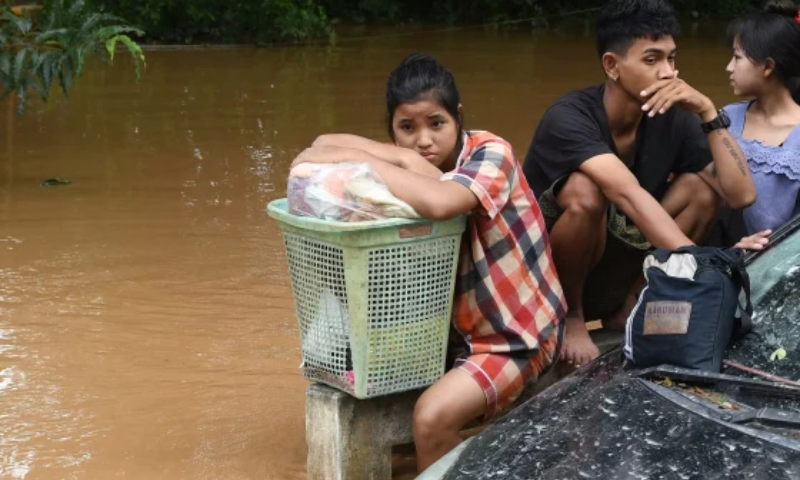YANGOON, Myanmar: The catastrophic flooding in Myanmar following Typhoon Yagi has resulted in a significant humanitarian crisis, with the death toll rising to 226, according to state media.
The storm, which hit northern Vietnam, Laos, Thailand, and Myanmar over a week ago, brought heavy rains and destructive winds, causing widespread flooding and landslides. The previous toll of 113 fatalities has now doubled, and 77 people are still reported missing.
The flooding has devastated approximately 260,000 hectares (640,000 acres) of rice paddies and other crops, with over 150,000 homes inundated. The UN Office for the Coordination of Humanitarian Affairs (UNOCHA) estimates that around 631,000 people have been affected, facing severe shortages of food, clean water, shelter, and clothing. Relief efforts are hindered by blocked roads, damaged bridges, and poor communication with remote areas.
Myanmar’s military junta has opened more than 400 relief camps to assist those displaced, and India has responded with 10 tonnes of emergency supplies, including food, clothing, and medicine. However, the UN has emphasized the urgent need for additional resources to manage the crisis effectively.
READ ALSO: UN Debates Palestinian Push for Israeli Withdrawal Today
The current flooding is considered the worst in Myanmar’s recent history. Past severe floods in 2008 and 2011, as well as Cyclone Nargis, have also caused significant destruction, but the current disaster surpasses these events in scale. Myanmar’s military government has historically been resistant to foreign aid, complicating the relief efforts.
Across Southeast Asia, the impact of Typhoon Yagi is also severe. In Thailand, 15 deaths have been reported, with the northern provinces experiencing their worst flooding in 80 years. The Thai government has announced financial aid to affected households. In Vietnam, the typhoon has caused 292 deaths and extensive damage to homes and crops, with estimated economic losses of $1.6 billion.























